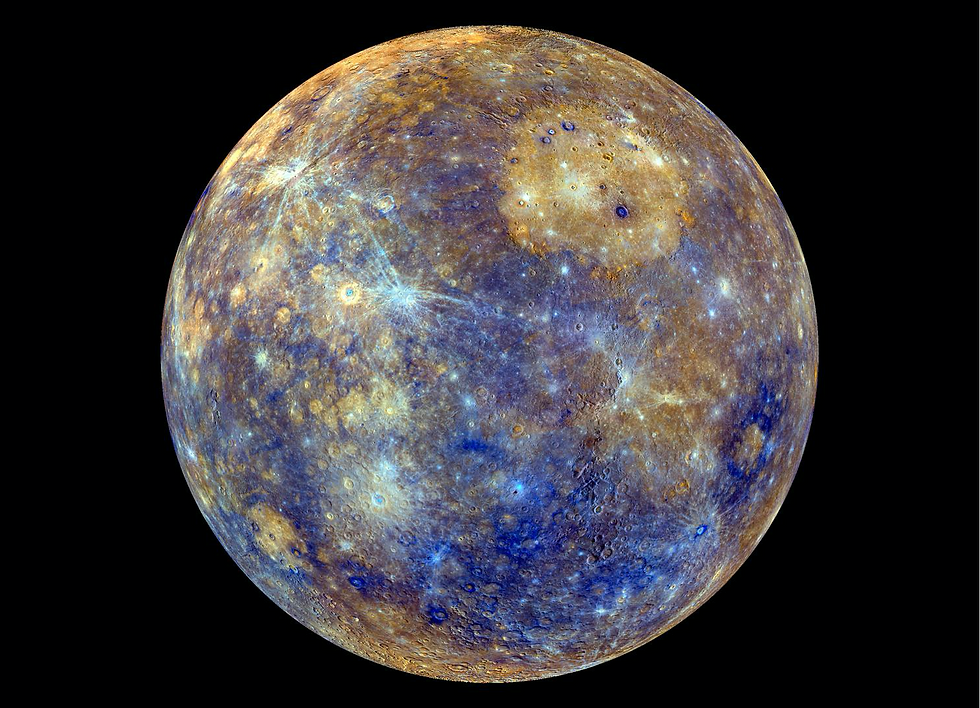We continue our series exploring the Solar System, today we talk about the innermost planet
Mercury is the innermost planet of the solar system. Its diameter is 4800 km and its mean distance from the Sun is 0.39 Astronomic Units. The eccentricity of the orbit is 0.21 and because of this high eccentricity, the surface temperature varies substantially: at the perihelion (when it is closest to the Sun), the temperature is about 700 K!
Mercury’s surface is marked by craters and larger circular areas, caused by impacts of minor bodies.

The craters are 3000–4000 million years old, indicating that the surface is old and undisturbed by continental drift or volcanic eruptions. Most of Mercury’s surface is covered by old and heavily cratered plains but there are some areas that are less saturated and the craters are less than 15 kilometers in diameter.

Mercury is always found in the vicinity of the Sun; observations are difficult because Mercury is always seen in a bright sky and close to the horizon. Moreover, when closest to the Earth in the inferior conjunction, the dark side of the planet is toward us. As late as in the beginning of the 1960’s, it was believed that Mercury always turns the same side toward the Sun. Finally, the rotation period was established by radar. One revolution around the Sun takes 88 days. The length of the day is 176 d, longer than on any other planet.
If you want to know more about the Mercury and the other Planets of the Solar System, log-in or register (it's free) to our members club!
Some has already been published about this topic, and more will be in the future!

Comments